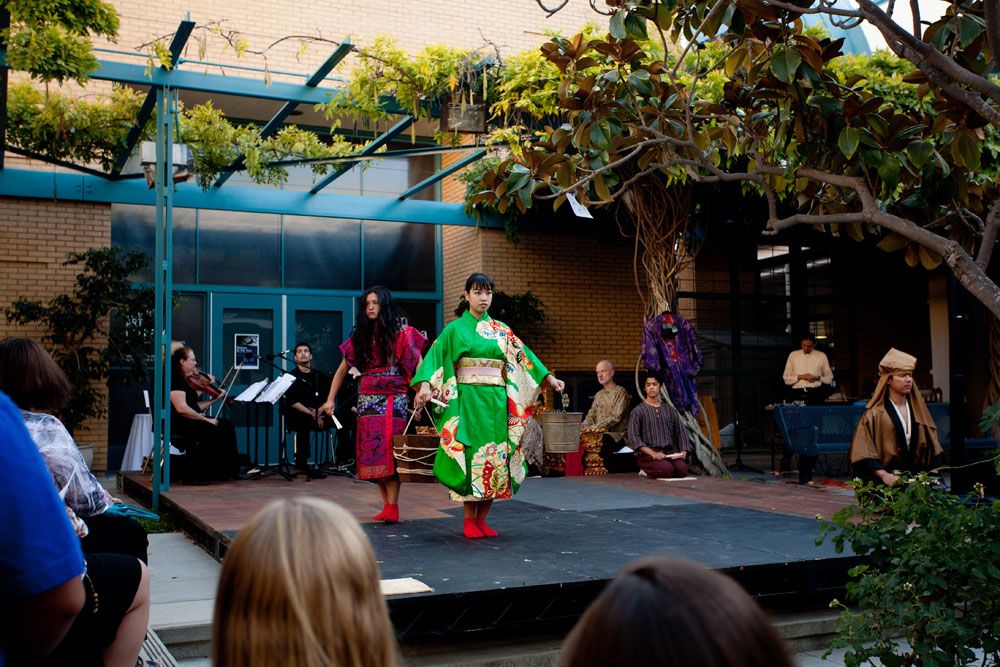
More than 200 members of the Loyola Marymount University community attended a performance of the Japanese Noh play “Matsukaze” on Sept. 20 in the George A.V. Dunning Courtyard. The play was a collaboration between the Theatre, Dance, Music and Studio Art departments in the College of Communication and Fine Arts.
“This represented a coming together of four departments to produce a truly creative project,” said Kevin Wetmore, theatre professor and director of the play. “I really hope this becomes a model for collaboration in CFA, and across the university.”
“Matsukaze,” or pining wind, is a story about the ghosts of two sisters who were salt makers in Settsu Province. Both died of grief after hearing news about a death and they linger in the mortal world because of their attachment to mortal desires. The production at LMU was one among several events linked to the “Return to Sea” exhibition by Motoi Yamamoto in the Laband Art Gallery. Yamamoto uses salt as his medium and created an original artwork on the floor of the gallery out of thousands of pounds of salt.
“We chose ‘Matsukaze’ in honor of Yamamoto’s work with salt,” Wetmore said. “Salt is a big theme in the play as well. It sees salt as a purifier and healer, but it also has the potential to sting.”
The performance lasted 40 minutes although it only had eight pages of dialogue. Wetmore, who adapted an English translation of the play, said one of the biggest challenges was finding language that made sense rather than aiming for a direct interpretation.
“It was most important to convey the intellectual and emotional content that the play was driving at,” Wetmore said. “But the play is also about what you saw on stage, the language of the movement and the beauty of the music. All of these elements working together enhanced the production as a whole.”
Paul Humphreys, an LMU music professor, composed and directed original music for the play. This wasn’t his first experience with Noh theatre: His dissertation was inspired by it. He said that he hoped the audience walked away experiencing yugen, a Japanese concept of profound grace and subtlety.
“There is a deep sense of poignancy tied to this story,” Humphreys said. “I hope people found its sense of beauty and impermanence, and a little bit of sadness.”
Teresa Heiland, assistant professor of dance and choreographer for the play, said that collaboration is another tool for learning and that it enhances the experience for the students and the faculty members. “Collaboration enriches the performance experience and enlivens the faculty,” Heiland said. “We have to grow together and become sensitive to each other’s needs.”



